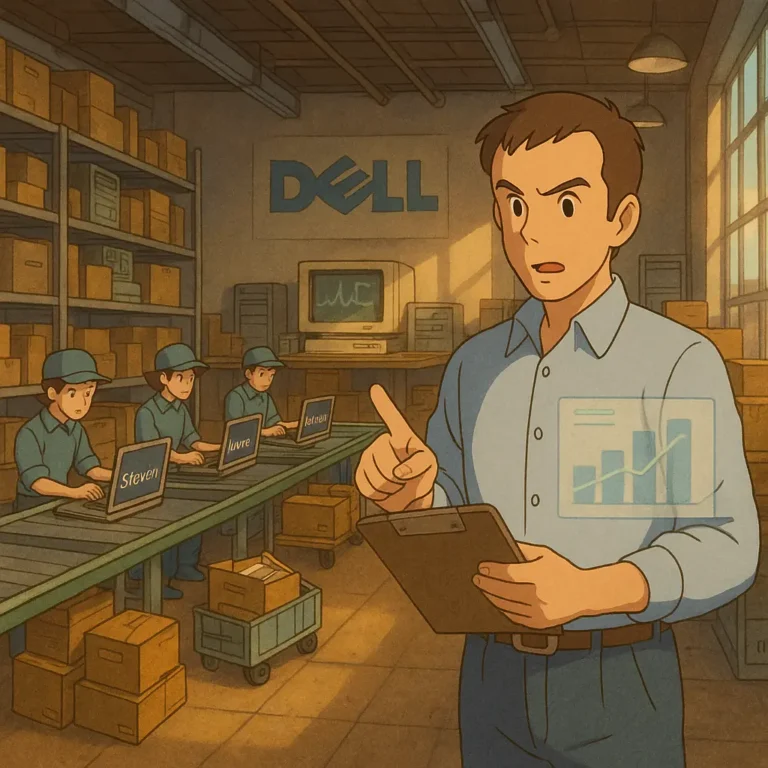
The warehouse management system (WMS) is a great tool for organizing, controlling, and tracking the inventory of any supply chain.
Warehouse management systems (WMS) are tech tools that simplify the supply chain’s inventory and flow of goods. Almost every supply chain requires a storage or holding facility. These facilities help the supply chain store raw materials or finished goods before moving to the production stage or the final consumers.
The storage facilities were often called warehouses, but with the current trend of supply chains, they are now commonly known as fulfilment or distribution centres. Managing these facilities, including the flow of goods and arrangement of the stored goods, is known as warehouse management.
Warehouse management can be much work, especially for a fast-moving industry. The flow of goods or commodities in and out of the warehouse can be very tasking for any warehouse or inventory manager.
Which is where the tech solution comes in.
Technological tools are becoming more prevalent in the supply chain field, and they play a role in advancing supply chain management across the globe. The tasking nature of the warehouse or distribution centres led to warehouse management systems or software development.
Types of Warehouse Management Systems (WMS)
There are generally four types of warehouse management systems.
1. Standalone WMS:
These are typically for smaller companies or warehouses that want to focus on the basics of warehouse management software. This type of WMS focuses on the flow of goods and warehouse management.
The standalone is cost-effective but favours warehouses or companies not wishing to expand soon. A more robust WMS is advisable for companies needing more complex inventory control.
2. ERP modules
The ERP (enterprise resource planning) is a more robust WMS tool than the standalone. It is used for larger businesses that wish to automate more tasks in their system and improve efficiency.
The ERP is expensive and requires educating the staff and getting used to it. It usually takes a while before businesses can get their return on investment using this software, but supply chains run much smoother once the ERP becomes a hit with the staff.
3. Supply chain modules
This software focuses on supply chain management as a whole. You wouldn’t be wrong to assume the warehouse management system is a part of this application.
The supply chain modules or supply chain management software takes on all aspects of the supply chain, from sourcing, vendor management, inventory control, logistics, and delivery.
Invest in supply chain software solutions with robust WMS features to get the best out of this system for your warehouse management.
4. Cloud-based WMS
The cloud-based WMS is simply warehouse management based on SaaS. It is a 100% web interface and allows the user access anywhere in the world. There are a few advantages to using this type of software, such as ease of use and maintenance. It is less expensive since you have to pay a monthly subscription, and it helps bring all parts together on a single platform.
Choosing the Right Warehouse Management Systems (WMS)
When choosing or selecting the right WMS for your warehouse or inventory control, there are a few questions you need to answer. These questions should serve as a guide to help you pick the right WMS for your organization.
1. Does your business need a Warehouse Management System (WMS)?
Identifying if your business or organization needs this is a great way to start, especially for small businesses or warehouses that can get by manually. Typically, the larger the business, the more need arises for WMS.
2. What type of Warehouse Management System (WMS) do you need?
The complexity of your supply chain is a great pointer to the type of WMS you will need. The ERP or supply chain modules would be preferable for more complex supply chains.
3. What is your Capital / Budget
This is a huge factor in getting the right WMS for your warehouse or supply chain. The more complicated the WMS is, the more expensive they tend to be. You can always factor in the cost when picking a WMS for your warehouse.
Factoring in the cost will help you decide on the most important features and guide you in selecting the right WMS for your warehouse management.
4. What is the return on investment
Installing a WMS doesn’t mean your warehouse management takes off. There is usually a period before the businesses can begin to yield returns from their investment. Businesses must also evaluate if the chosen WMS is of value to their supply chain.
5. What is Learning or use difficulty
A big hurdle in implementing WMS is how long you and your team will take to learn it. A WMS software that takes too long to learn would considerably disadvantage your organization and supply chain.
Features of the Warehouse Management Systems (WMS)
The WMS is designed to help your warehouse run smoothly and more efficiently. I have written a few key features every organization should look for when selecting the perfect WMS.
1. 𝗔𝘂𝘁𝗼𝗺𝗮𝘁𝗶𝗼𝗻: Automation is a valuable tool for any supply chain because it saves time and allows the supply chain to improve lead times and efficiency.
2. Digital Picking eliminates paper picking, allowing businesses an innovative, streamlined, and cost-efficient alternative.
3. 𝗘𝗮𝘀𝘆 𝗿𝗲𝗽𝗼𝗿𝘁𝘀: Every business requires reports to assess its results, operational abilities, sales, revenues, and profits. However, reports can be challenging to create and time-consuming. The WMS makes this a lot easier.
4. 𝗙𝗼𝗿𝗲𝗰𝗮𝘀𝘁𝗶𝗻𝗴: Demand forecasting is an essential tool for supply planning. Demand forecasting allows the supply chain to adjust its operations, capital, and resources to meet demand, helping it become more efficient and profitable.
5. 𝗜𝗻𝘃𝗲𝗻𝘁𝗼𝗿𝘆 𝘁𝗿𝗮𝗰𝗸𝗶𝗻𝗴 𝗮𝗻𝗱 𝗰𝗼𝗻𝘁𝗿𝗼𝗹: The WMS allows every business properly track and control with less time and effort from staff within the company. With the WMS tracking inventory, it reduces mistakes by as much as 90%.
Benefits of WMS
- The WMS makes the supply chain and its fulfilment obligations faster and more accurate.
- Although a sore topic, the WMS allows the supply chain manager to slim down the team, saving the supply chain labour cost.
- The WMS platform allows organizations and businesses to manage multiple warehouses.
- Installation of the WMS encourages more visibility for the supply chain, especially regarding inventory control.
- WMS allows supply chains to predict or forecast demands using data on the flow of inventory compounded by the WMS alongside pre-set formulas.

Obinabo Tochukwu Tabansi is a supply chain digital writer & ghostwriter helping professionals and business owners across Africa explore various strategies that work and learn from the success and failures of various supply chains across the globe. He also ghostwrites social content for logistics & supply chain businesses








helloI really like your writing so a lot share we keep up a correspondence extra approximately your post on AOL I need an expert in this house to unravel my problem May be that is you Taking a look ahead to see you
of course like your website but you have to check the spelling on several of your posts A number of them are rife with spelling issues and I in finding it very troublesome to inform the reality on the other hand I will certainly come back again
I just could not depart your web site prior to suggesting that I really loved the usual info an individual supply in your visitors Is gonna be back regularly to check up on new posts
Hi Neat post Theres an issue together with your web site in internet explorer may test this IE still is the marketplace chief and a good component of people will pass over your fantastic writing due to this problem
Thank you for the good writeup It in fact was a amusement account it Look advanced to far added agreeable from you However how could we communicate
My brother suggested I might like this website He was totally right This post actually made my day You cannt imagine just how much time I had spent for this information Thanks
I just could not leave your web site before suggesting that I really enjoyed the standard information a person supply to your visitors Is gonna be again steadily in order to check up on new posts
Thanks I have just been looking for information about this subject for a long time and yours is the best Ive discovered till now However what in regards to the bottom line Are you certain in regards to the supply
Yes, I am certain
Yes. Please send a message to me at tochukwutabansi@supplychainnuggets.com